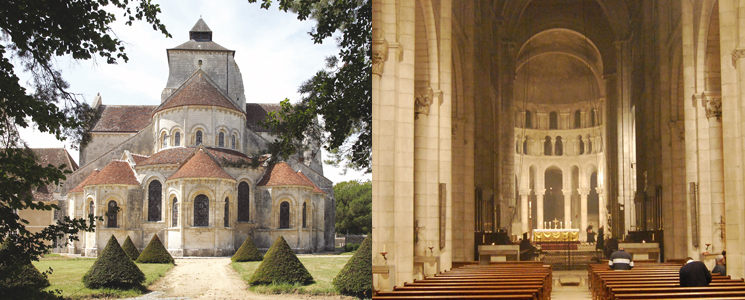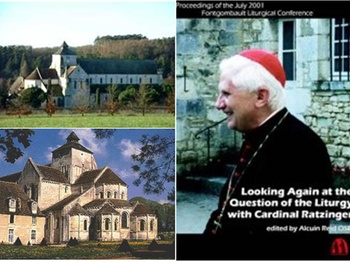Theology of the liturgy
A lecture by His Eminence Joseph Cardinal Ratzinger, France, 2001
A lecture by His Eminence Joseph Cardinal Ratzinger, Prefect of the Congregation for the Doctrine of the Faith, delivered during the Journees liturgiques de Fontgombault, 22-24 July 2001. The Benedictine abbey of Our Lady of Fontgombault, founded in the 11th century, is now under the Solesmes Congregation. In July 2001, Cardinal Joseph Ratzinger was the principal speaker at a three-day conference on the liturgy.
The Second Vatican Council defined the liturgy as "the work of Christ the Priest and of His Body which is the Church.”
The work of Jesus Christ is referred to in the same text as the work of the redemption which Christ accomplished especially by the Paschal Mystery of His Passion, of His Resurrection from the dead and His glorious Ascension.
"By this Mystery, in dying He has destroyed our death, and in rising He has restored life." At first sight, in these two sentences, the phrase "the work of Christ" seems to have been used in two different senses. "The work of Christ” refers first of all to the historical, redemptive actions of Jesus, His Death and His Resurrection; on the other hand, the celebration of the liturgy is called "the work of Christ.”READ...
The Second Vatican Council defined the liturgy as "the work of Christ the Priest and of His Body which is the Church.”
The work of Jesus Christ is referred to in the same text as the work of the redemption which Christ accomplished especially by the Paschal Mystery of His Passion, of His Resurrection from the dead and His glorious Ascension.
"By this Mystery, in dying He has destroyed our death, and in rising He has restored life." At first sight, in these two sentences, the phrase "the work of Christ" seems to have been used in two different senses. "The work of Christ” refers first of all to the historical, redemptive actions of Jesus, His Death and His Resurrection; on the other hand, the celebration of the liturgy is called "the work of Christ.”READ...





.jpg)






Sem comentários:
Enviar um comentário
Nota: só um membro deste blogue pode publicar um comentário.